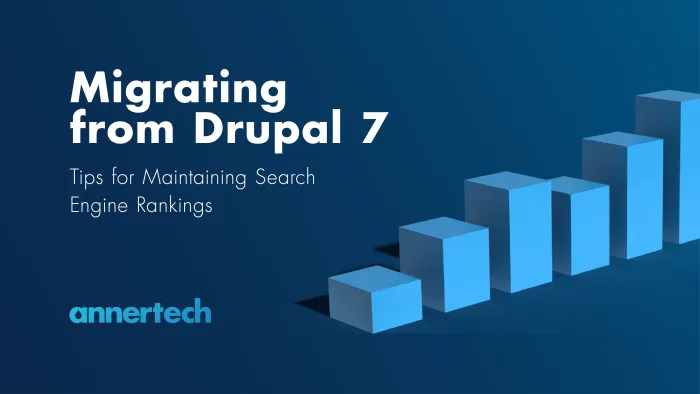Planning Your Drupal 7 Migration: The to-do list you can't do without

A successful migration from Drupal 7 to Drupal 10 requires careful planning. In this article, we’ll look at key considerations and strategies to help you plan your Drupal 7 migration.
As Drupal 7 reaches its end of life in just under a year, many Drupal website owners are considering migrating their sites to the latest version, Drupal 10. This can be done efficiently with careful planning and consideration of various factors.
This to-do list will help you plan your Drupal 7 migration:
1. Get to grips with your current content
Conducting a comprehensive content audit is essential before embarking on any migration project. It is important to identify outdated or redundant content, which may need to be updated or rewritten, or perhaps even removed entirely.
Yes, a content audit is a good idea
If you’re looking to migrate your content over to a new platform or website, bear in mind that keeping content costs money. The more content work you need to do, the longer it will take.
You want to prioritise the content you really need and ditch or rewrite the content that no longer works.

2. Assess your current Drupal 7 site
The next step in planning your Drupal 7 migration is to assess the functionality and architecture of your current site. This includes understanding the site’s functionality, modules currently in use, and any customisation that has been done.
The goal is to identify any issues or potential roadblocks that may arise during the migration process.
3. Choose the right migration approach
There are different migration approaches available, depending on the complexity of your Drupal 7 site and the desired outcome.
For example, a “lift and shift” approach may be suitable for some sites that only require minimal changes. Others may require a more customised approach involving a phased migration or a complete rebuild to allow for significant changes and improvements.
8 tips and tricks for making migration easier
Senior Backend Developer Erik Erskine knows that migrating at scale isn't for the faint of heart.
Here are some of the tricks he has learned along the way, and some tips that will ensure that your next migration is easier than you expect.

4. Evaluate the suitability of existing modules
Some Drupal 7 modules may not be available in Drupal 10 or may have been deprecated by new and better solutions. Therefore, it’s important to evaluate the availability and suitability of your existing extensions and identify any alternatives that may be required.
This will help ensure a smooth migration process and avoid any surprises later on.
5. Plan for data migration
Another important aspect of any migration project is the data migration planning. This includes all content, user accounts, taxonomies, redirects, URL aliases, files, metatags and much more. Careful planning for and execution of the migration of this data are essential to ensure that all data is accurately migrated.
Migrating from Drupal 7? What about your site’s SEO?
As organisations migrate their websites newer versions of Drupal, an important aspect to consider is the potential impact on your site's SEO.
In this blog post, Stella discusses how to maintain your site’s SEO – which plays a vital role in driving organic traffic and improving search engine rankings – while migrating from Drupal 7.

6. Test and plan for post-migration activities
After migration, it’s important to thoroughly test the new Drupal 10 site to ensure that everything works as planned. Additionally, any post-migration activities, such as theme customisation and SEO optimisation, should be planned accordingly.
Carry out testing with real users to ensure that the new design and content structures are intuitive and user-friendly.
Conclusion
In conclusion, a Drupal 7 to Drupal 10 migration requires careful planning and consideration of various factors.
Assessing your site and its content, and defining a detailed roadmap of where you want to get to are critical to the success of the project and should not be rushed.
By following the above advice, you can ensure a successful Drupal 7 migration and a smooth transition to Drupal 10.

Do you need help with your Drupal 7 migration planning?
Migrating from Drupal 7 can be daunting. We've been assessing websites, auditing content, and planning and performing migrations from Drupal 7 for many years, and have the experience to ensure a smooth transition.
Get in touch


